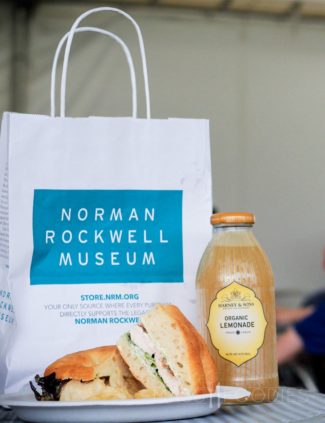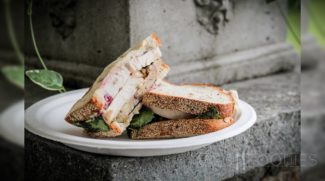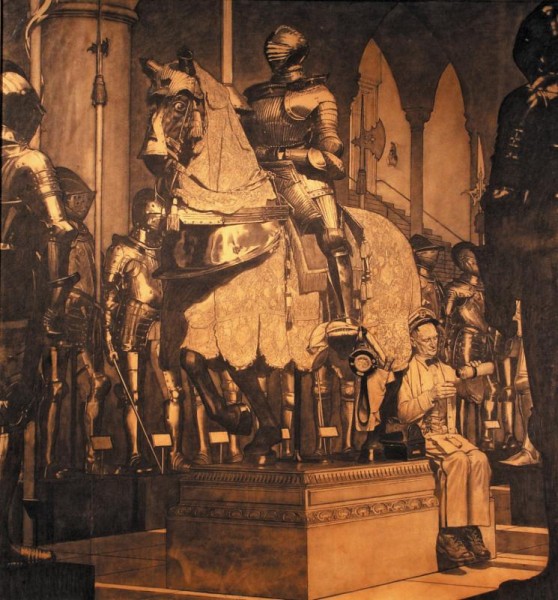
Enjoying the warmer weather we turn to a summer series visiting museums to partake in a summer journey of art and food, after all, #FoodIsArt. (Eat at the Museum of Fine Arts, Boston; Peabody Essex Museum; Worcester Art Museum; Norman Rockwell Museum, Isabella Stewart Gardner Museum… and more).
From The Problems We All Live With – a 1964 iconic painting depicting Ruby Bridges, a six-year old African American girl on her way to William Frantz Elementary School, an all-white public school during the New Orleans desegregation crisis – to the Four Freedoms – a series of four 1943 oil paintings referencing President Roosevelt’s Four Freedoms State of the Union address – Norman Rockwell’s art epitomizes the essence of American life. Between the raw edges of his later work that infused the concerns of Americans with depictions of poverty, race and war to his optimistic outlook on the simple charmed country life, Rockwell portrayed the country through a clear lens and marked his expressions as an American tradition. Breathing life into the Rockwell legacy stands the Norman Rockwell Museum in Stockbridge, Massachusetts – the town he called home for the last 25 years of his life.

The museum itself is ‘Rockwellesque,’ housing the largest and most significant of his works in the Berkshires. To complement its portrayal of the life Rockwell built through his paintings, the museum offers an equally appropriate ‘Rockwellian’ rendition with its culinary offerings.
Catered by executive chef Brian Alberg of The Red Lion Inn – a staple inn in New England since the 18th century and a supporter of the artistic traditions through artist residencies and pop-up performances – the Terrace Café is a simplistic adaptation of Rockwell’s America. The Terrace Café overlooks picturesque Berkshires scenery, offering a seasonal dining area reminiscent of Stockbridge’s charming beginnings. Adorned with flowers pots, American flags and the sweet smell of fresh air, it balances the reasonings of Rockwell’s artistic style and encourages life’s imitation of art.
Chef Alberg – an active culinary member of Chefs Collaborative and Boston Chefs as well as the founding chair of Berkshire Farm & Table – understands the food movement of the Berkshires and Hudson Valley and intertwines his beliefs of freshness into the picture-perfect frame built by Rockwell. Dishes at the Norman Rockwell Museum ring true to the American family’s traditional views on what lunch is comprised of: sandwiches, salads and sweets.

The three S’s ring true to the guests of the museum with names meant to embody Rockwell’s famous works like The Connoisseur – marinated grilled veggies with Monterey goat cheese on focaccia bread – The Runaway – a roast beef with horseradish mayo on a challah bread – and The Freedom from Want – a turkey breast sandwich with cranberry mayo, lettuce, and stuffing on multi-grain bread. While many may argue that Rockwell’s museum deserves a menu of sophistication and fine cuisine to celebrate his legacy, it would be counterproductive to the museum, its guests and his work. The menu –carefully crafted to include references to his art, like the stuffing in The Freedom of Want – does not overstate its importance to guests of the Norman Rockwell Museum and instead, continues Rockwell’s work through food as an art form.
Rockwell, “without thinking too much about it in specific terms,” showed the America he “knew and observed to others who might have not noticed.” He stated that his fundamental purpose was to ”interpret the typical American” as he was a “story teller” and he did not fail us. The Terrace Café is an extension of his influence.


